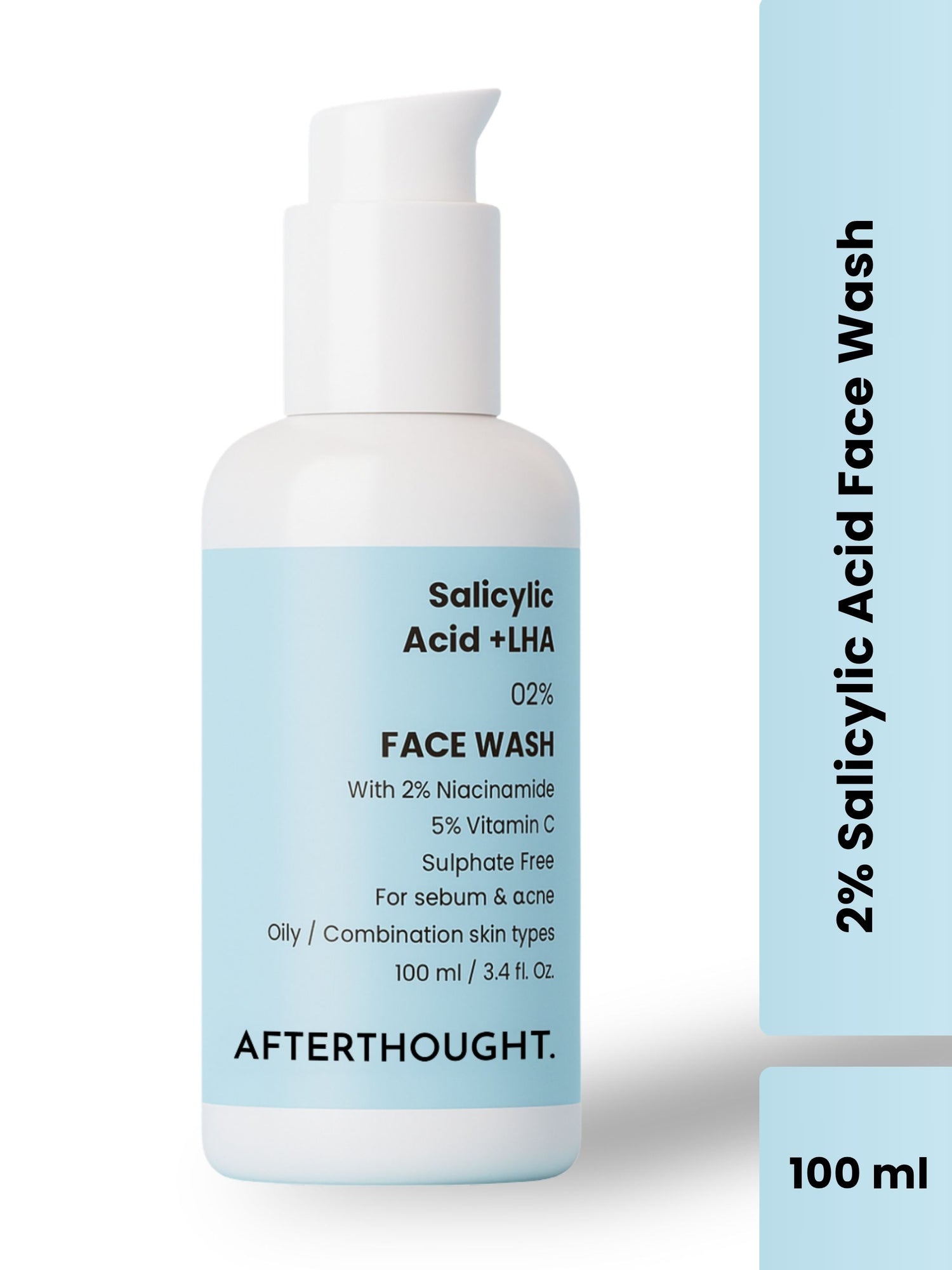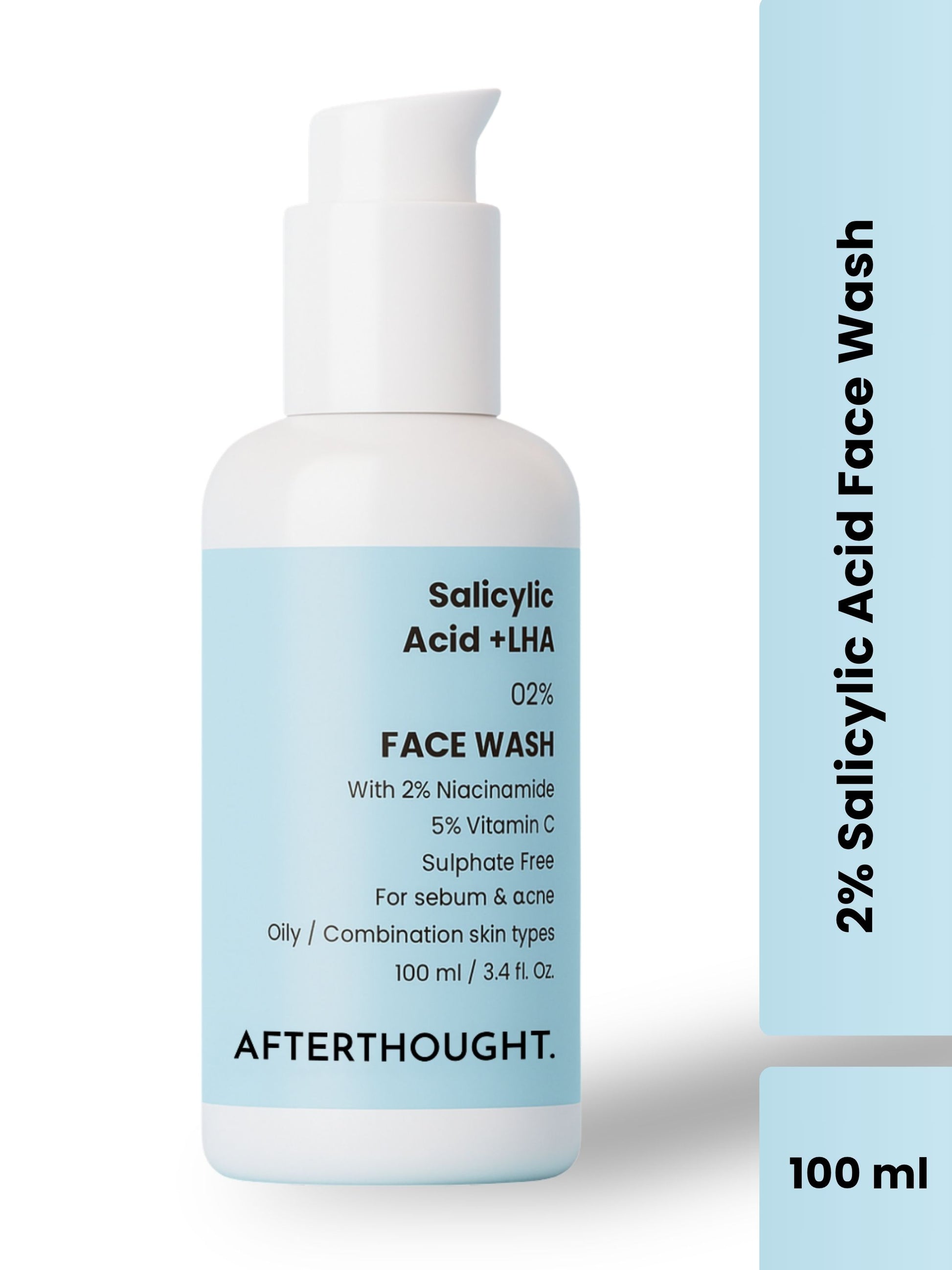Which Acids are Good For Glowing Skin?
Achieving a radiant, glowing complexion is a common skincare goal, and acids have become key players in helping us reach it.
When used correctly, these potent ingredients can transform dull, tired skin into a luminous, healthy glow. Welcome to Afterthought.
In this guide, we'll explore various acids known for their skin-brightening properties and how to incorporate them into your skincare routine.
Glycolic Acid
What it is: Glycolic acid is an alpha hydroxy acid (AHA) derived from sugarcane. It has the smallest molecular size among AHAs, allowing it to penetrate the skin deeply.
Benefits: Glycolic acid works by exfoliating the top layer of dead skin cells, promoting cell turnover and revealing fresher, more vibrant skin underneath. It also helps to reduce fine lines, hyperpigmentation, and uneven skin tone.
How to use: Start with a low concentration (around 5-10%) and gradually increase as your skin builds tolerance. Use glycolic acid-based products at night and always follow up with sunscreen during the day to protect your skin from UV damage.
Lactic Acid
What it is: Lactic acid is another AHA, derived from milk. It has a larger molecular size compared to glycolic acid, making it gentler on the skin.
Benefits: Lactic acid exfoliates the skin's surface while also providing hydration. It helps to improve skin texture, lighten dark spots, and even out skin tone. It's particularly beneficial for those with sensitive skin due to its gentle nature.
How to use: Similar to glycolic acid, start with a lower concentration and use it in your nighttime routine. Lactic acid can be found in serums, masks, and peels.
Salicylic Acid
What it is: Salicylic acid is a beta hydroxy acid (BHA) derived from willow bark. It is oil-soluble, making it particularly effective for oily and acne-prone skin.
Benefits: Salicylic acid penetrates deep into the pores to exfoliate from within, helping to clear out excess oil, dirt, and dead skin cells. It reduces acne, blackheads, and whiteheads, leaving the skin clearer and more radiant.
How to use: Incorporate salicylic acid in the form of cleansers, toners, or spot treatments. It can be used daily or as needed, depending on your skin's tolerance.
Ascorbic Acid (Vitamin C)
What it is: Ascorbic acid, commonly known as vitamin C, is a powerful antioxidant known for its brightening properties.
Benefits: Vitamin C neutralizes free radicals, stimulates collagen production, and inhibits melanin production, resulting in a brighter, more even complexion. It also helps to fade dark spots and protect the skin from environmental damage.
How to use: Use a vitamin C serum in the morning before applying sunscreen. Look for products with stabilized forms of vitamin C and store them in a cool, dark place to maintain their potency.
Mandelic Acid
What it is: Mandelic acid is an AHA derived from bitter almonds. It has a larger molecular structure than glycolic and lactic acids, making it one of the gentlest exfoliating acids.
Benefits: Mandelic acid exfoliates the skin, improves texture, and reduces hyperpigmentation. It is suitable for all skin types, including sensitive and acne-prone skin.
How to use: Use mandelic acid products a few times a week, gradually increasing frequency as your skin builds tolerance. It can be found in serums, peels, and cleansers.
Azelaic Acid
What it is: Azelaic acid is a naturally occurring acid found in grains like barley and wheat.
Benefits: Azelaic acid has anti-inflammatory and antimicrobial properties, making it effective for treating acne and rosacea. It also helps to lighten dark spots and improve skin texture, leading to a brighter complexion.
How to use: Azelaic acid can be used daily, both morning and night. It is available in creams and gels, often in prescription-strength formulations.
Kojic Acid
What it is: Kojic acid is a byproduct of the fermentation process of certain fungi.
Benefits: Kojic acid inhibits the production of tyrosinase, an enzyme involved in melanin production, making it effective in reducing hyperpigmentation and brightening the skin.
How to use: Use kojic acid products, such as creams or serums, in your evening routine. Consistent use over several weeks is necessary to see visible results.
Tips for Using Acids Safely
- Patch Test: Always perform a patch test before introducing a new acid into your routine to ensure your skin doesn't react negatively.
- Start Slowly: Begin with lower concentrations and gradually increase as your skin builds tolerance.
- Hydrate and Moisturize: Acids can be drying, so it's essential to keep your skin well-hydrated and moisturized.
- Sun Protection: Acids can increase your skin's sensitivity to the sun. Always apply a broad-spectrum sunscreen during the day.
- Listen to Your Skin: Pay attention to how your skin responds and adjust the frequency of use accordingly. If you experience irritation, reduce the frequency or concentration.
Conclusion
Incorporating acids into your skincare routine can be transformative, leading to a brighter, more radiant complexion.
Whether you're dealing with dullness, hyperpigmentation, or uneven texture, there's an acid out there that can help you achieve your skincare goals.
Remember to introduce these powerful ingredients gradually, protect your skin from the sun, and enjoy the glowing results.
Also Read: Can You Use Salicylic Acid Face Wash Everyday?









